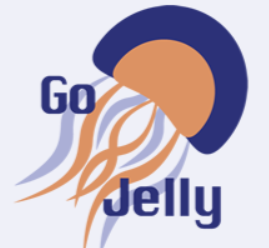- Norges Teknisk-Naturvitenskapelige Universitet (NTNU) - Norway,
- Agência Regional para o Desenvolvimento da Investigação Tecnologia e Inovação (ARDITI) – Associação - Portugal,
- Nacionalni Institut za Biologijo (National Institute of Biology) - Slovenia,
- University of Haifa - Israel,
- Braude College of Engineering Karmiel R A - Israel,
- Hanseatische Umwelt Cam GmbH - Germany,
- SINTEF Ocean AS - Norway,
- Christian-Albrechts-Universität zu Kiel - Germany,
- Crm Coastal Research and Management Gesellschaft für Küstenforschung und Management mit Haftungsbeschränkung GBR - Germany,
- National Research Council (Consiglio Nazionale delle Ricerche, CNR) - Italy,
- Sanpietro Societa Cooperativa Agricola - Italy,
- University of Hamburg - Germany,
- Fondation Europeenne de la Science - France,
- Chinese Academy of Sciences, Institute of Oceanology - China,
- Helmholtz Centre for Ocean Research Kiel (GEOMAR) - Germany
"The objective of the GoJelly project is to develop, test and promote a gelatinous solution to microplastic pollution by developing a TRL 5-6 prototype microplastics filter (GoJelly) for commercial and public use, where the main raw material is jellyfish mucus. In doing so, the consortium addresses two environmental issues with one approach by removing the commercially and ecologically destructive sea and coastal pollution of both jellyfish and microplastics. This innovative approach will ultimately lead to less plastic in the ocean, municipal demand (and thereby competitive prices) for jellyfish raw material to fill the ""mucus-need"" by filter developers, and in turn more jobs for commercial fishers in off-seasons. The by-products of the GoJelly biomass have other uses as well, ensuring that GoJelly also delivers a green innovation, resulting in novel, valuable resource for the food and feed industry as well as agro-biological fertilizer for organic farming. The GoJelly prototype products will be tested and demonstrated in three different European seas (Norwegian, Baltic and Mediterranean), by a range of stakeholders, including commercial fishers and industry partners. Tying it together, the project will also ensure the possibilities for broader European promotion and utilization of GoJelly at the local, regional and global level by delivering a socio-ecological methodological toolbox for forming and implementing policies. GoJelly will broadly communicate its results in several formats such as traditional social media, open lab ship cruise, and in the form of an experimental online game depicting different management scenarios under different jellyfish- and microplastics combinations. An interdisciplinary and international consortium consisting of technology developers, business analysts, fishing companies, research institutes, and both natural and social scientists will realize GoJelly, and will ensure the uptake of GoJelly products by industry and policy makers."
Want to analyze based on this project via our analysis tool? Analyze this project
Knowledge Gaps
Environmental fate and behavior of plastic
Environmental effects and ecotoxicity
Environmental exposure
Commercial-related uncertainties
Chronic or long-term effects, multiple forms and/or sources
Publications





